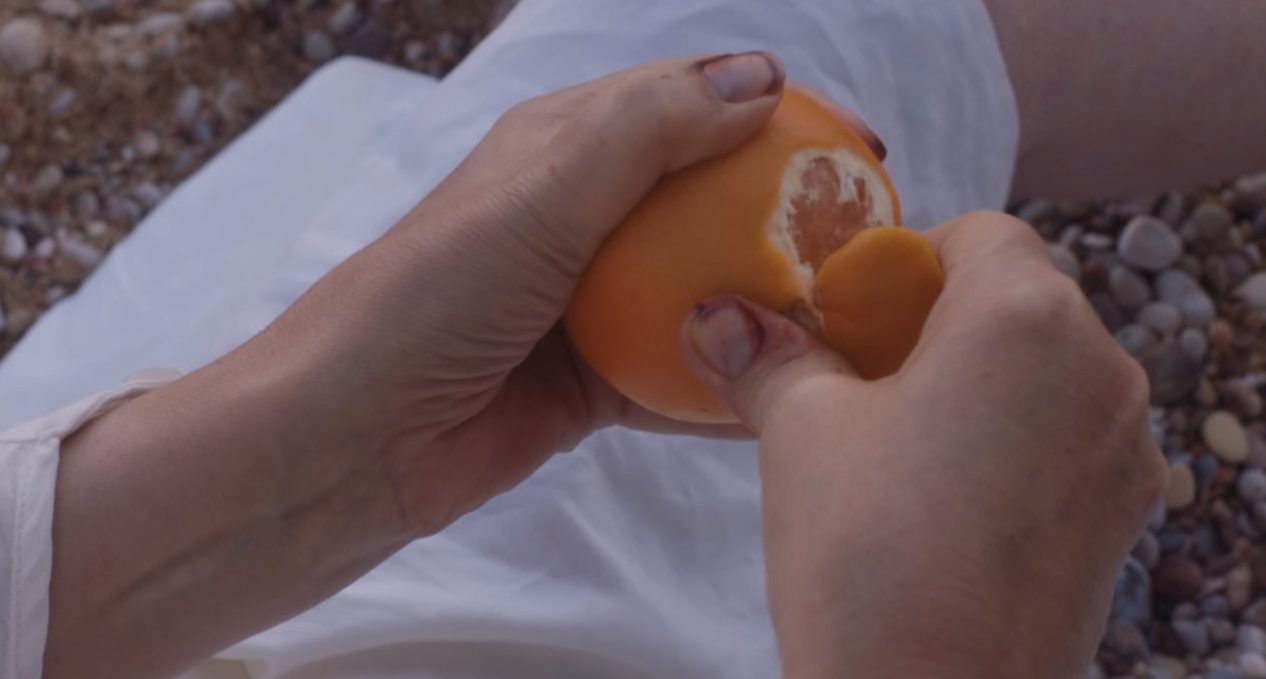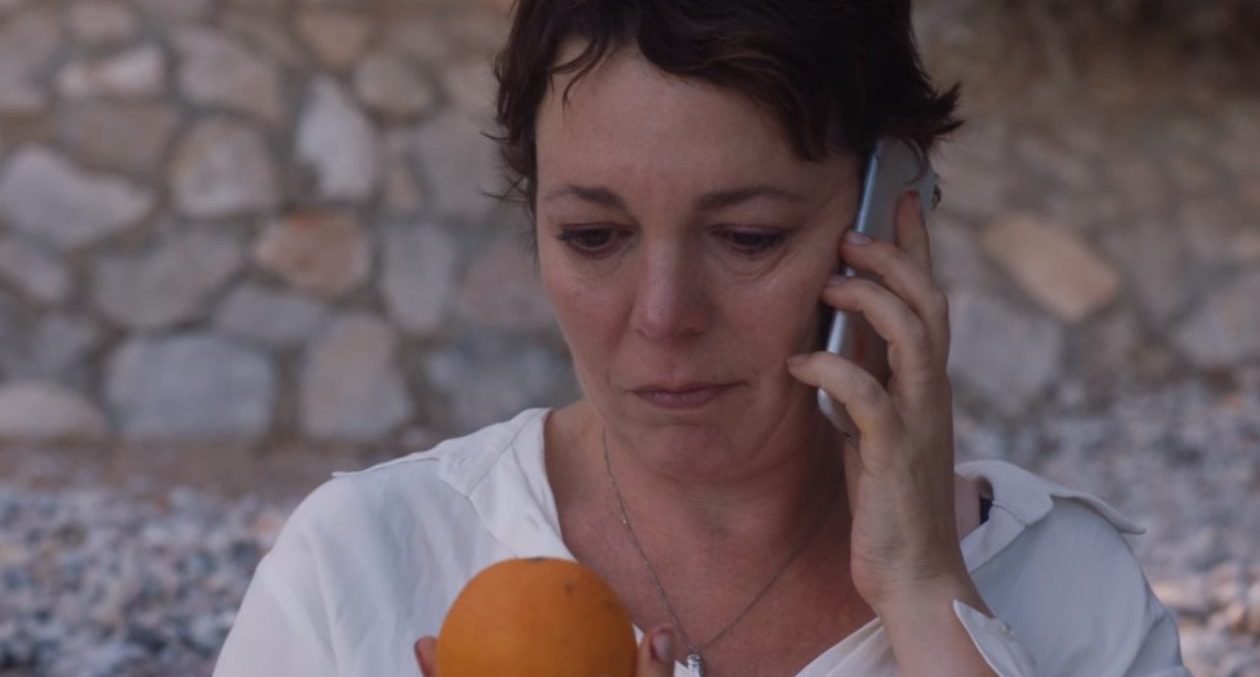‘The Lost Daughter’ follows a professor on vacation who encounters a young mother and daughter at the beach and is subsequently reminded of her own troubled motherhood. As Leda grapples with her memories and guilt of how she behaved as a young mother, her inner turmoil spills out in a variety of situations in the present, making for an emotional and strangely surreal narrative. Many seemingly ordinary objects begin to take on a special significance as we see how they are intimately tied to Leda’s past.
Oranges form a recurring motif in the film, appearing in flashbacks as well as in the present. Most notably, orange also appears in Leda’s hands in the film’s closing scene. So what is the underlying significance of the oranges in ‘The Lost Daughter’? Allow us to explain. SPOILERS AHEAD.
What’s the Significance of Oranges?
In their first few appearances in the film, the oranges signify the happy memories that Leda has of her relationship with her daughters as a young mother. In what becomes a repeating flashback, a young Leda and both her daughters are seen peeling an orange, trying to get the skin off in one spiral piece. The game is accompanied by a snake song, which all three sing together. Throughout the film, Leda’s happy memories (which seem quite rare) with her daughters predominantly feature them peeling an orange and singing the snake song.

With this established, the fruit then begins appearing in other parts of the narrative. When Leda first moves into her holiday apartment, the seemingly fresh orange in the fruit basket turns out to be rotten underneath. This, it later becomes clear, augers the dark psychological journey that Leda embarks on shortly thereafter.
Through regular flashbacks, we see just how tainted Leda’s memories of her daughters are, just like the orange that is rotten from underneath. In fact, Leda brings up the rotten orange to Lyle at the bar, and his knowing laugh can be interpreted as his own troubled past (which remains largely unexplored). In this regard, Lyle and Leda seem to be kindred spirits and later connect over their past.
The film’s closing scene cements the orange as a crucial signal of (mis)direction when we see Leda mysteriously pick one up at the beach as she speaks to her daughters on the phone. She begins peeling the orange and appears content for the first time as she listens to her daughters’ voices. It seems like Leda is transported back to the happy times that she spent with her daughters as a young mother but is also reminded of how her daughters still love her.
With Leda peeling a fresh orange and speaking to her daughters after a long time, the ending seems reconciliatory and suitably happy. However, some ambiguity is sown in with the appearance of the orange (which Leda does not have with her when she stumbles onto the beach the previous night). It seems to hint that the closing scene is not real but takes place in Leda’s imagination and is possibly a dream.
Leda could also be dead, with the closing scene showing us a version of her afterlife where she has let go of her guilt and is being lovingly spoken to by her daughters. Considering how peeling oranges with her daughters is Leda’s foremost happy memory of motherhood, it seems fitting that her dream (or afterlife) would mirror it.
Thus, oranges are cleverly used to symbolize Leda’s memories, and we see the fruit in different states (and contexts) as we find out more about Leda’s past. The inexplicable orange seen in the last scene is particularly pivotal and adds to the film’s strong but subtle psychological thriller tone. Interestingly, the snake melody that young Leda sings with her daughters whenever they peel an orange was reportedly created on-set by Jessie Buckley (who essays young Leda) and the two girls that play younger versions of Bianca and Martha (Leda’s daughters).
Read More: Is Leda Dreaming at the End of The Lost Daughter?


You must be logged in to post a comment.